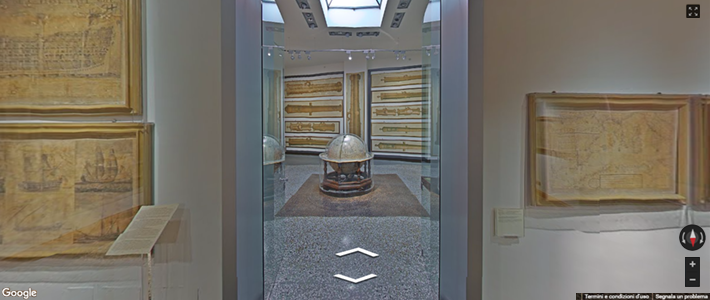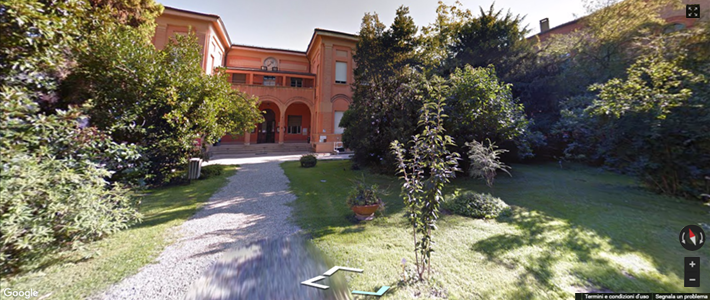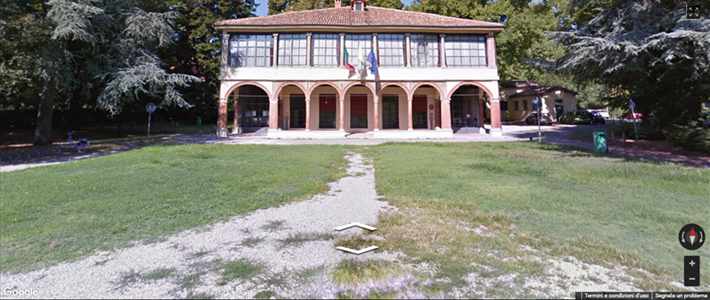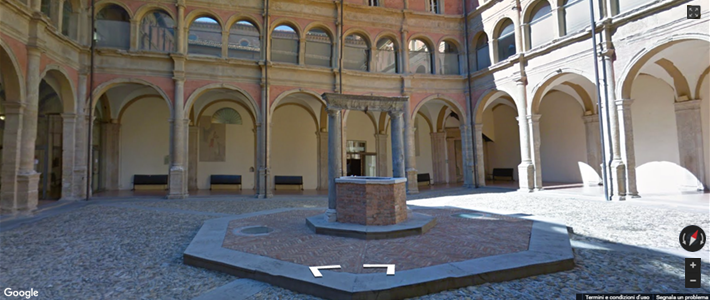The service is connected to Google Maps, offering 360-degree panoramic images and an internal view of some of the sites of the University of Bologna.

Aula Magna Santa Lucia
The Aula Magna Santa Lucia, inaugurated on 5 May 1988, is located inside a church dating back to the 5th century. The facade and monumental apse of the building remained unfinished for almost two centuries. After the unification of Italy, it was used at first as barracks in 1874, then as a gym and, finally as a school laboratory. A few years after the inauguration of the Aula Magna, the restoration of the Aula Absidale was also completed.

Palazzo Poggi
Today, Palazzo Poggi is the headquarters of the University of Bologna. Dating back to the 16th century, it became the seat of the Academy of Sciences in 1714 and, in that same period, the Torre della Specola was designed and built. In 1803 it became the seat of the University, which moved here from the Archiginnasio building. Inside, in addition to the Rectorate and offices, it houses the extensive collection of the Palazzo Poggi Museum, the Museo della Specola, the Museo Europeo degli Studenti, the Aula Carducci and the University Library.

Botanical Garden and Herbarium
Botanical Gardens and Herbariums represent - despite their obvious differences - a museum of the plant world. Both founded in the 16th century, their function to begin with was primarily educational, mainly linked to the teaching of medical botany, allowing students to observe and study medicinal plants. Nowadays it is also used for other purposes, with an evolution closely connected to the development, or decline, of botanical sciences.

Palazzina della Viola (via Filippo Re)
The central part of Palazzina della Viola was built toward the end of the 15th century by Annibale Bentivoglio to make it a place of delight for his family. It was used for different purposes until 1803 when Napoleon's government allocated it to the School of Agriculture of the University, headed by Filippo Re. Today, the Palazzina della Viola houses the offices of the International Relations Division.

Palazzo Hercolani
Palazzo Hercolani was built in the late 18th century and designed by the architect Angelo Venturoli. In 1912 it was rebuilt by Edoardo Collamarini who recreated the facade. The statues placed in the entrance hall and along the grand staircase are by the sculptor Giacomo De Maria. The building was purchased by the University in 1973 and underwent major restoration works from 1989 to 1992. Today, Palazzo Hercolani is the headquarters of the School of Political Sciences and of the Departments of Sociology and Business Law and of Political and Social Science.

Palazzo Marescotti Brazzetti
The elegant Renaissance building of Palazzo Marescotti Brazzetti was designed by Giovanni Beroaldo on the ruins of former buildings. It has been adorned over the centuries with frescoes by Rolli, Caccioli and with the magnificent baroque grand staircase by Gian Giacomo Monti. In 1997 it was purchased by the Alma Mater Studiorum, becoming the headquarters of the Department Of Arts.

San Giovanni in Monte
The Complex of San Giovanni in Monte was originally a monastery of the Lateran Canons. From the Napoleonic era to 1984 it was used as a prison. The restoration was a cultural revisiting of its function as place of study and meditation, which the monastery building acquired for the city during the Renaissance age. Today, the San Giovanni in Monte Complex houses the headquarters of the Department of History Culture Civilization.
